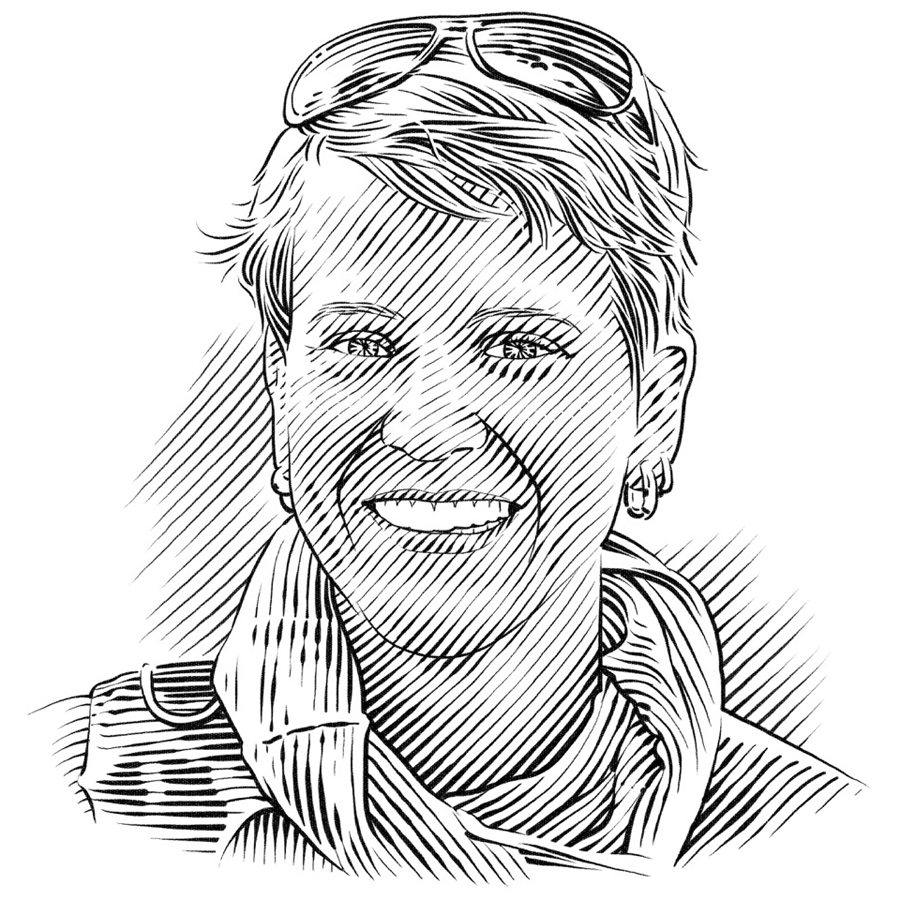Barbara Wueringer

Who I am
I grew up in Austria, a land-locked country in the heart of Europe. My parents love travelling and whenever they could take time off, they would pack the Volkswagen Kombi and drive to the sea with my brother and me. We spent all my childhood summers on the Mediterranean coast and one of my first memories of the ocean – I was too young to remember my age – is from Turkey. My mom left an empty, but not clean, soup can overnight in shallow water. When we returned to it the next day there was an octopus inside. What a fascinating animal to discover at such young age. Of course we released it alive!
At the age of 14 I became an Open Water Diver at the Great Barrier Reef, Australia. When I saw my first shark in the wild, I realised that these animals were nothing like the media portrayed them to be. After volunteering at Doc Gruber’s Shark Lab in the Bahamas, I was completely hooked on sharks and rays.
My studies allowed me to return to Australia, where I now live. Here I started to work on the sensory biology of shovelnose rays. They always say that you are what you eat, but I think you also are what you perceive. Imagine you could see the UV patterns on flowers as bees do, or you could hear like an owl! We never think about how strongly our own sensory abilities influence our behaviour, thoughts and feelings. I believe that people fear sharks because our senses do not work as well underwater as they do on land, our natural habitat. The discomfort that people experience when, for example, they swim in the ocean and cannot fully perceive what is moving underneath them is then projected onto predators that are perfectly adapted to their environment – sharks.
I moved to Cairns more than six years ago while investigating the sensory abilities and feeding behaviour of sawfish for my PhD. I was collaborating with a local company that caught sawfishes in the remote regions of Cape York to be put on display in public aquaria around the world. This trade has since stopped, but the sawfishes I worked with continue to inspire people all over the globe.
Where I work
The city of Cairns in Far North Queensland, Australia, is often called the gateway to the Great Barrier Reef, which well over 100,000 people flock to every year. Interestingly, when it comes to shark research or shark-based tourism, Cairns is not really on the map. It is, however, the last city you pass through en route northwards to the remote regions of Cape York.
As well as being ancient, the landscapes of Cape York are highly variable due to the alternating dry and wet seasons. Since Aboriginal settlement more than 40,000 years ago, fires have also had a major influence on the vegetation. Cape York country is wild and sparsely populated. When the monsoonal rains kick in, river crossings along the few roads become impassable and remain so for months. Field work in Cape York’s remote rivers and along its coastline is carried out under the watchful eyes of saltwater crocodiles, an ancient predator that can easily reach five metres in length. Few people know that these rivers and the coastline are also inhabited by some of the last remaining healthy populations of four species of sawfishes.
I will never forget the moment that I saw my first wild sawfish. We were in a very remote location close to the tip of Cape York in the north-eastern Gulf of Carpentaria. It was a 4.5-metre green sawfish that had become entangled in our gill net in knee-deep water. The animal was so massive that when we first caught sight of it from the shore we thought we had caught a dugong. We tagged and released it. But the question of how these animals live has mesmerised me ever since.
What I do
Working in the firm belief that long-term conservation goals can only be achieved if they are based on sound science and if local people understand and support them, I intend to bring research-based tourism to Cairns and Cape York. Sharks and Rays Australia (SARA) has been set up and a network of local volunteers, local tourism providers, NGOs and indigenous rangers has been created. A pilot study into the feasibility of the project, funded by the Save Our Seas Foundation, is ongoing. Its aims are to identify how local stakeholders can be involved in the project and how a tagging study of sharks, rays and sawfishes out of Cairns and in Cape York can be publicly funded in order to ensure its continued long-term existence.
